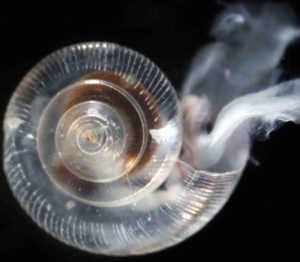Bight ’23 launching field sampling for ocean acidification monitoring survey

The 2023 cycle of the Southern California Bight Regional Monitoring Program is launching field sampling for a two-year monitoring survey that will track ocean acidification’s trajectory in Southern California’s coastal ocean and how shell-forming organisms are being affected.
The Bight ’23 Ocean Acidification (OA) study element, which will start field sampling this February, will measure pH and oxygen levels in surface waters to look for changes in seawater chemistry, plus analyze pteropods, or sea snails, for signs of shell dissolution. The original planned field sampling start date was delayed by about six months.
In addition to the pteropod shell analyses, Bight ’23 will use eDNA-based monitoring methods on a pilot basis to begin tracking the relative abundance of the same organisms that are being monitored for shell dissolution. eDNA-based monitoring uses the DNA that organisms shed into their environment – known as environmental DNA – to identify and count organisms; eDNA is envisioned as a complement to manual observation of organisms.
Bight ’23 OA monitoring is being conducted in coordination with other West Coast OA monitoring programs, including the California Cooperative Oceanic Fisheries Investigations (CalCOFI) and the National Oceanic and Atmospheric Administration, enabling researchers to put the Bight program’s findings into a West Coast-wide context.
More news related to: Climate Change, Ocean Acidification and Hypoxia, Regional Monitoring, Southern California Bight Regional Monitoring Program